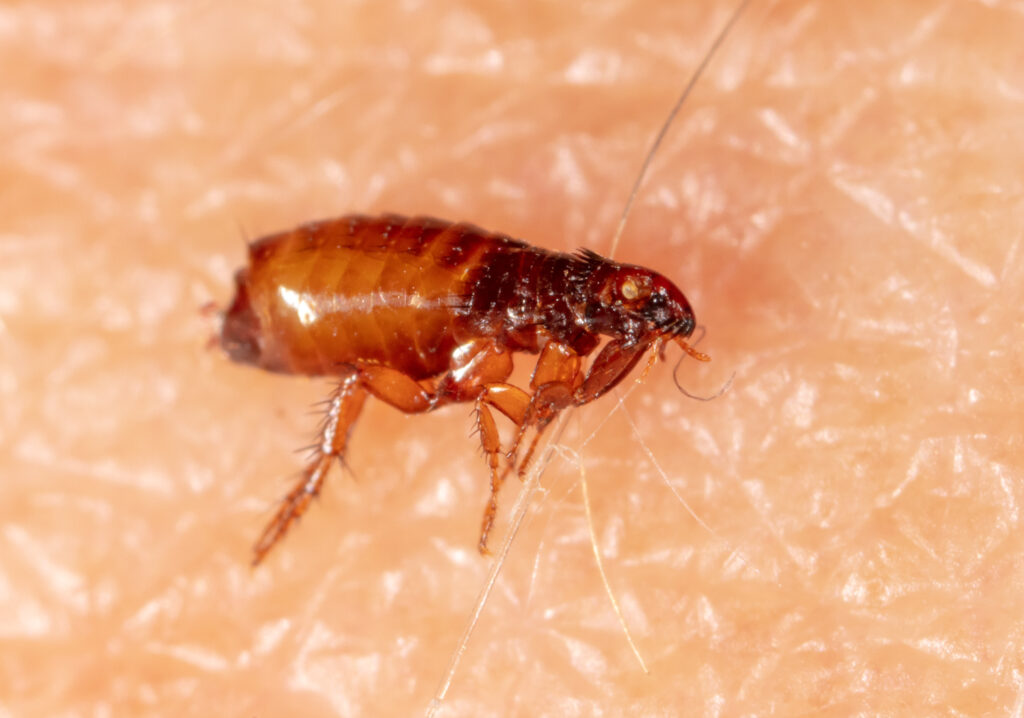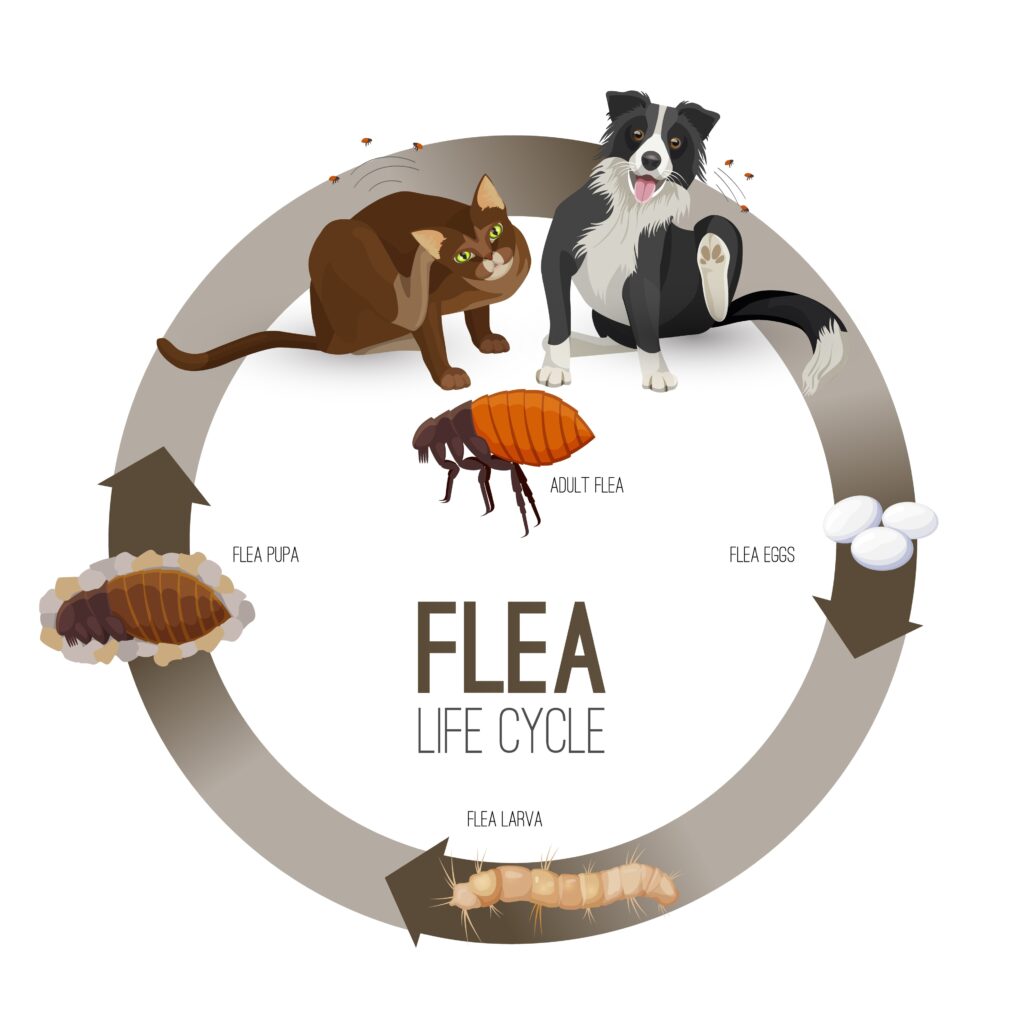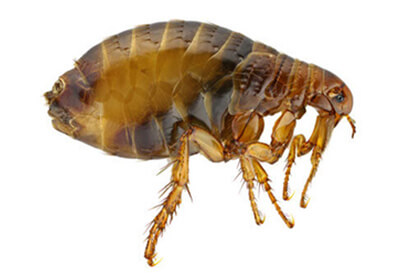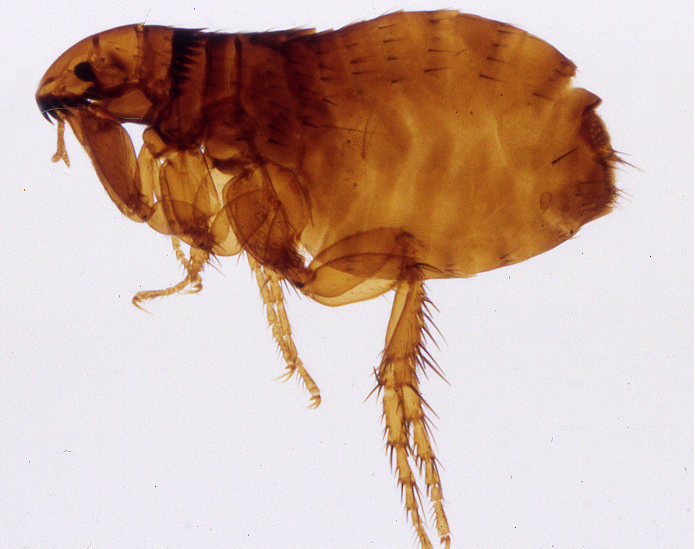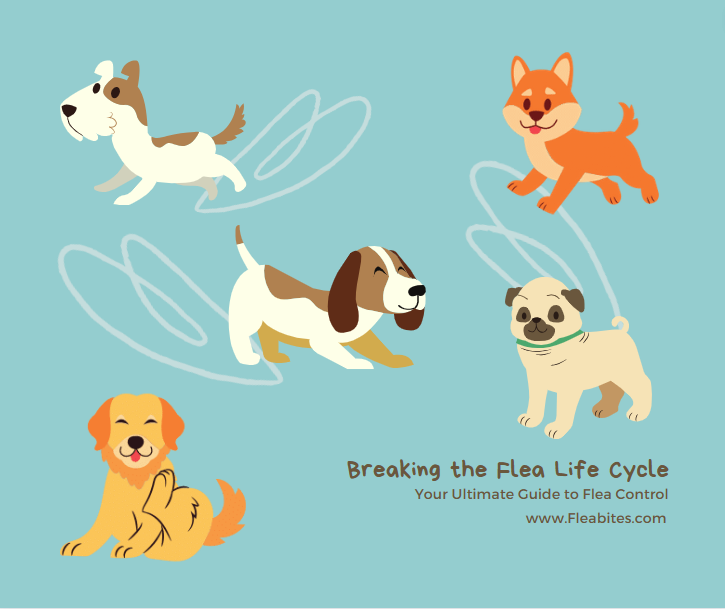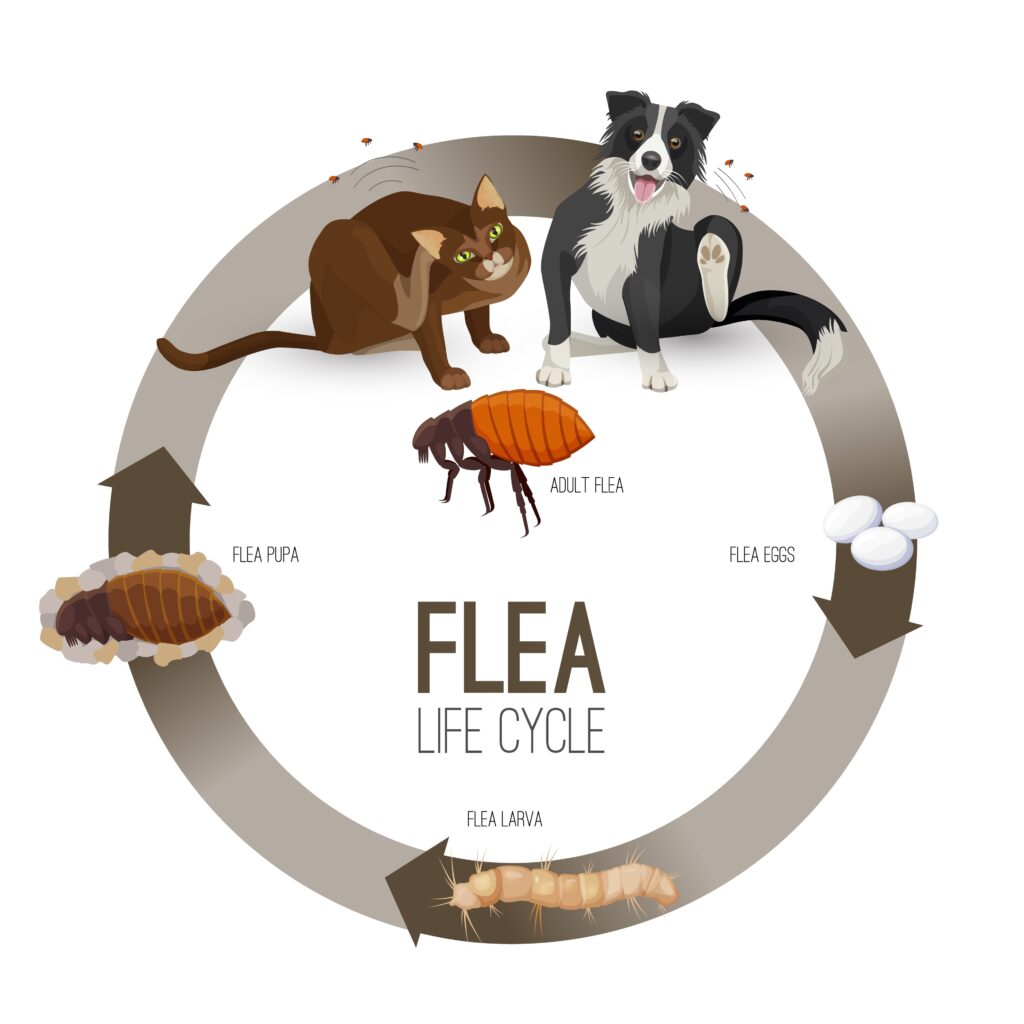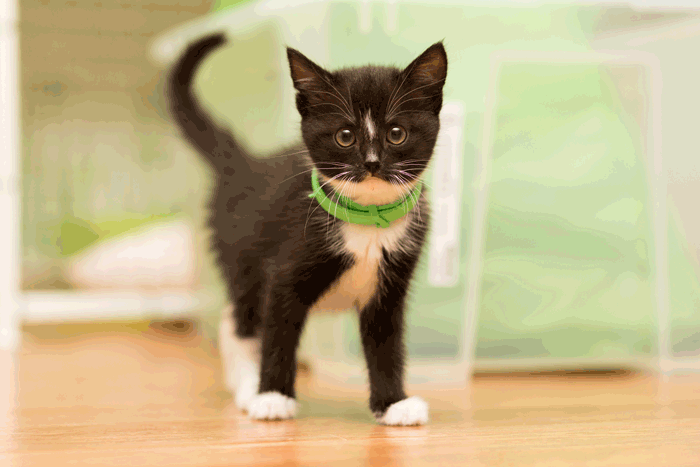How Long After a Flea Bomb Can I Re-Enter My House? Fleas, tiny as they are, can wreak havoc in our lives, especially when they infest our beloved homes. Understanding the safe and effective use of flea bombs is pivotal to regain control and ensure a flea-free environment. Often, homeowners are left with the lingering question: how long after deploying a flea bomb can they safely return to their house? The answer isn’t as straightforward as one might hope.
This uncertainty is not just about avoiding the inconvenience; it’s primarily about ensuring the safety of everyone in the household. This article will delve deep, providing clarity on the safe re-entry period after using a flea bomb, and equip you with a broader perspective on its effectiveness and precautions. According to the Environmental Protection Agency (EPA), flea bombs, also known as foggers, release pesticides in the air in a confined space, and understanding their mechanics is essential to their safe usage.
What is a Flea Bomb and How Does It Work?
A flea bomb is more than just an ordinary insecticide; it’s a comprehensive solution designed to combat a widespread flea infestation. Picture this: a canister that, when activated, releases a fine mist of chemicals formulated to annihilate fleas in every life stage. But to harness its power effectively, it’s crucial to understand its underlying mechanics.
Definition and Main Components
Flea bombs, colloquially known as foggers, are aerosol products that disperse insecticides in a fog-like manner. The primary components usually include pyrethrins and pyrethroids, two chemicals known for their efficacy against fleas. These chemicals disrupt the nervous system of fleas, leading to their swift extermination. It’s the fine mist that allows the chemicals to penetrate hard-to-reach areas, ensuring that no flea has a place to hide.
The Science Behind Its Flea-Killing Mechanism
The prowess of a flea bomb lies in its ability to target fleas in various life stages—from eggs to adults. When released, the fog permeates carpets, upholstery, and even tiny crevices, where fleas often reside. The chemicals then act on the fleas’ nervous system, causing paralysis and eventual death. A study from Entomology Today highlights how pyrethroids, one of the main components in many foggers, are particularly potent against adult fleas, rendering them ineffective in mere hours.
Common Misconceptions about Flea Bombs
While flea bombs are a powerful tool in the fight against infestations, they aren’t a magic bullet. One common misconception is that a single use will eradicate an infestation completely. In reality, while they can significantly reduce flea populations, consistency in treatment and a multi-pronged approach are often necessary for total elimination. Moreover, it’s essential to understand that flea bombs primarily target adult fleas, and a comprehensive approach addressing all life stages is key to long-term relief.
General Guidelines for Using a Flea Bomb
Deploying a flea bomb effectively goes beyond merely pressing the canister’s button. To ensure the safety and efficiency of this method, homeowners must adhere to specific guidelines. The aftermath of incorrect usage can be hazardous, not only to the household’s human members but also to pets. To derive the best results from a flea bomb, it’s paramount to understand its correct application, the required preparatory measures, and the subsequent steps to take post-bombing.
Pre-Flea Bomb Preparations
Before setting off a flea bomb, ensure that all windows and external doors are shut tightly. This confinement helps to maintain the potency of the fog within the infested area. Next, cover or remove any exposed food items, drinking water, and kitchen utensils. Additionally, switch off any ignition sources like pilot lights or open flames to avoid accidents. It’s also advised to lay newspaper or old sheets beneath the canister to capture any residue, ensuring easy cleanup.
Safety Precautions to Consider
Safety first. Always read the flea bomb’s label instructions meticulously. Wearing gloves and a mask during the activation process can shield you from direct contact with the chemicals. Ensure that all pets, including fish in aquariums, are removed from the premises, and disable any aquarium aerators. After activating the bomb, vacate the premises immediately and refrain from re-entering until it’s deemed safe, which is typically after the recommended waiting period mentioned on the product’s label.
Optimal Conditions for Maximum Effectiveness
To bolster the effectiveness of a flea bomb, consider the environmental conditions. Warmer temperatures can often enhance the efficacy of the chemicals, so, if possible, use the bomb on a warm day. A well-ventilated area post-bombing expedites the dispersion of residual chemicals, making it safer to re-enter sooner. According to a report from Pest Management Science, the efficacy of insecticidal foggers can vary based on the environmental conditions, underscoring the importance of setting the right scene for optimal results.
Factors Affecting Re-Entry Time
The pivotal moment after deploying a flea bomb is discerning the right moment to re-enter your home. It’s not merely about waiting a prescribed number of hours, as various elements play a role in determining the appropriate and safe duration. Recognizing these factors can be instrumental in ensuring that your return is not just timely but also safe for all inhabitants of the household.
Brand and Chemical Composition of the Flea Bomb
Different brands formulate their flea bombs using varied chemical compositions. While many rely on pyrethrins and pyrethroid, some might incorporate other insecticides or synergists to enhance efficacy. The specific chemicals used and their concentrations will influence the re-entry time. For instance, products with a higher concentration of active ingredients might require a longer waiting period. Always refer to the product’s label, which should provide explicit guidelines on the recommended duration.
Size and Ventilation of the Treated Area
The size of the room or area treated can significantly influence the dissipation rate of the insecticidal fog. Larger spaces with good ventilation systems may allow the chemicals to disperse faster than smaller, poorly ventilated areas. If your home boasts an advanced ventilation system or if you’ve set up fans post-treatment, you might find it safer to re-enter a bit sooner. However, always ensure that the air is free from chemical odors before deciding to return.
Environmental Conditions (humidity, temperature)
Environmental factors, such as humidity and temperature, play a crucial role in the dispersion of the fog and the rate at which the chemicals break down. As per a research article from The Journal of Economic Entomology, warmer conditions can increase the volatility of certain insecticidal compounds, potentially accelerating their breakdown. Conversely, high humidity levels might prolong the persistence of these chemicals, requiring an extended waiting period before it’s safe to re-enter.
Typical Re-Entry Duration After Flea Bombing
While understanding the variables affecting re-entry time is crucial, most homeowners seek a clear-cut answer: how long should they typically wait post-flea bombing? Although many factors come into play, as previously discussed, there are general guidelines based on the average conditions and common flea bomb compositions. These benchmarks, combined with keen observation and understanding, can guide individuals in determining the safest time to return.
Immediate Aftermath and Potential Risks
Directly after a flea bomb’s deployment, the treated space is filled with a dense fog of insecticides. This period poses the highest risk, as the concentration of chemicals is at its peak. It’s during this phase that re-entry can lead to acute exposure, which might cause respiratory distress, skin irritation, and even more severe reactions in sensitive individuals. Given this, the immediate aftermath is a definitive no-entry zone, regardless of the product or conditions.
Average Waiting Period for Popular Flea Bomb Brands
Though each brand might have its specific recommendations, most common flea bombs suggest a waiting period ranging from 2 to 4 hours post-treatment. For instance, brands like Raid and Hot Shot typically advocate for this duration. However, even after this period, it’s paramount to ensure that the treated space is adequately ventilated before re-entry. Always cross-reference the product’s label with real-time conditions in your home.
Signs that Indicate It’s Safe to Go Back Inside
Physical indicators can often act as a reliable gauge to determine safety. Once the waiting period is over, open windows and doors to aid in ventilation. A noticeable absence of chemical odor, coupled with clear visibility (no fog), are positive signs. Additionally, using air quality monitors, if available, can provide an objective measure. However, when in doubt, especially if there are vulnerable individuals like children or the elderly involved, it’s always prudent to err on the side of caution and delay re-entry.
Post Bombing: Steps Before Settling Back In
Returning home after a flea bombing session isn’t about simply unlocking the door and resuming life as usual. To ensure the health and safety of all household members, there’s a sequence of steps to undertake. This post-treatment phase is as vital as the preparation, with actions that secure the benefits of the treatment while mitigating any potential risks from lingering chemicals.
Ventilating the House Properly
Upon your return, prioritize ventilation. Open all windows and doors to allow fresh air to circulate throughout the premises. If available, use fans to expedite the process, placing them near windows to draw out any residual chemical fumes. Ensuring proper ventilation doesn’t just make re-entry safer but can also improve the effectiveness of the treatment by removing any chemicals that might inhibit the flea bomb’s action.
Cleaning Essentials: What to Wash and What to Discard
Post-bombing cleanup is not just about aesthetics; it’s a health imperative. Begin with soft surfaces, such as carpets, rugs, and upholstery. Vacuum thoroughly, ensuring the contents are disposed of outside the home. Wash all bedding, curtains, and clothing in hot water, as this can help neutralize any residual chemicals. Dishes, cutlery, and kitchen surfaces should be washed and sanitized, even if they were covered. Any exposed food items left during the treatment should be discarded, as they may have been contaminated.
Checking for Flea Activity: Are Additional Treatments Necessary?
After the initial cleanup, be vigilant for any signs of persisting flea activity. Examine pet bedding, carpets, and other hotspot areas for live fleas or flea dirt. According to PetMD, while flea bombs are effective against adult fleas, eggs and pupae might sometimes survive, necessitating supplementary treatments. If you notice a resurgence, consider consulting with an entomologist or pest control expert to devise a comprehensive flea management strategy.
Alternatives to Flea Bombs
While flea bombs are undeniably potent tools in our arsenal against these relentless pests, they aren’t the sole solution. In certain scenarios, homeowners might seek alternatives, either due to concerns about chemical exposure or the desire for a more holistic approach. Thankfully, the battle against fleas offers multiple fronts, ensuring you have a suite of methods tailored to your comfort and preferences.
Natural Flea Repellents and Treatments
For those keen on more organic solutions, a world of natural repellents awaits. Ingredients commonly found in homes, like lemon, apple cider vinegar, and diatomaceous earth, have proven flea-repelling properties. Essential oils, particularly eucalyptus, lavender, and cedarwood, can be diluted and sprayed in infested areas, offering a fragrant defense. These methods, while gentler, might require more frequent application and a combination of strategies for optimal results.
Professional Extermination Services
Should the infestation prove too overwhelming, or if you’re seeking a more hands-off approach, professional extermination services can be your answer. These experts, armed with knowledge and specialized equipment, can tackle even the most stubborn infestations. They often employ integrated pest management (IPM) techniques, which focus on long-term prevention through a combination of chemical treatments and environmental modifications. An article from The National Pest Management Association underscores the benefits of leveraging professional expertise in severe infestation cases.
Preventive Measures to Avoid Flea Infestations
Prevention, as they say, is better than cure. Ensuring your home remains an unwelcome place for fleas starts with regular cleanliness routines. Vacuum frequently, especially in areas where pets rest. Wash pet bedding weekly and consider natural flea repellent sprays as a maintenance measure. For pets, regular baths, flea combs, and preventive treatments can act as the first line of defense, keeping these pests at bay before an infestation takes hold.
Conclusion
Navigating the world of flea infestations can indeed be daunting, but with the right knowledge and tools, it’s a battle you’re equipped to win. While flea bombs offer a powerful solution, it’s imperative to use them with caution, understanding the nuances that dictate their safe and effective deployment. Armed with this comprehensive guide, you’re better prepared to tackle these pesky invaders, ensuring a comfortable, flea-free abode for you and your loved ones. But remember, the journey against fleas doesn’t end here. Continual learning and adapting to new methods and information can fortify your defenses in this ongoing battle.
Recap of Key Takeaways
- Flea bombs are potent but require careful handling and understanding.
- The re-entry time post-bombing is influenced by various factors, including the product’s composition, environmental conditions, and the size of the treated area.
- Post-treatment measures, such as proper ventilation and thorough cleaning, are essential for safety and effectiveness.
- Alternatives to flea bombs, including natural treatments and professional services, offer varied approaches to managing infestations.
Emphasizing the Importance of Safety and Knowledge
Your safety, along with that of your family and pets, is paramount. Every step, from preparation to post-treatment, should be undertaken with this principle at the forefront. Moreover, continuous education is your ally. For more in-depth resources and updates on flea management, consider exploring reputable institutions like the Centers for Disease Control and Prevention (CDC) or the Entomological Society of America, ensuring you’re always a step ahead of these unwelcome guests.
